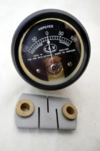In the main the ammeter is a volt meter measuring the volts across a shunt, in the old days the CAV 208 alternator had a shunt between the alternator and battery to control the alternator output with the 440 regulator between M1 and M2 terminals, these were one of very few alternators to have current control. Normally only found on buses and coaches, designed to keep the lights powered while engine ticking over.
I think Durite still make an ammeter but CAV and Lucas were part of British Leyland so when they went so did the major British auto electric manufacturers. Ring and Durite are still going and Stirling is big on the canal boat scene. So this
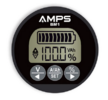
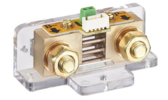
is the type of thing we see today, cost over £100 made by Sterling Power and likely can be found in boat chandlers designed for the likes of narrow boats.
Today I use my clamp on when required, the cheapest clamp on to measure DC is around £35 from internet, but more like £100 from an electrical whole sale output, as in the main electricians need them calibrated, and cheaper models you can't get calibrated.
These
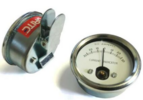
came in 30 and 60 amp versions, the square version seems to have gone, the standard automotive test set
is still made by Durite, sure you could order one from any auto electrical outlet, the modern one
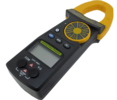
is rather expensive, and as an auto electrician one needs both amps and volts at the same time, so the old one was better, but I now use
And sorry unlikely to find one except on the internet, at £35 so much cheaper that screwfix price £96 for cheapest DC ammeter.






